Six Banned Candies You Won’t Be Getting On Halloween
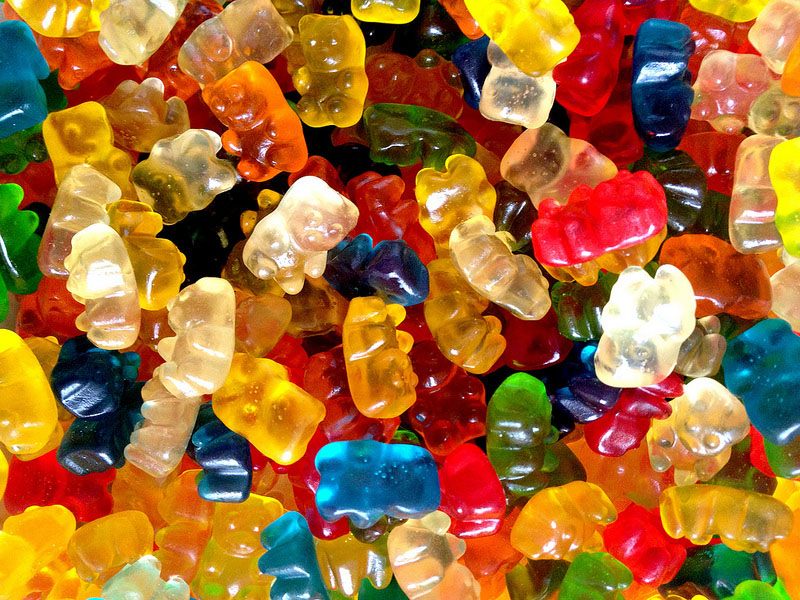
Haribo sugar free gummy bears, discontinued because of, er, digestive troubles. (Photo: jamz196/flickr)
Treats have been part of the Halloween tradition for centuries, and in the U.S., candy has been an indelible part of the holiday since the 1940s. But over this long history, we’ve also lost a few goody bag items forever: six types of gross, dangerous, offensive, or trademark-infringing candy.
You probably know that Halloween started as the Gaelic festival of Samhain, when the dead were supposed to walk the earth and the living would dress as ghosts in order to confuse vengeful spirits. In the 10th and 11th centuries, the Catholic Church, as part of its attempt to move people away from these “pagan” traditions, introduced the tradition of Halloween snacks. The Church encouraged children or poor beggars to walk around saying prayers for lost souls. In exchange, they would receive gifts like sweet breads, coins, and soul cakes. In Ireland, rather than pray for the dead, children would perform some sort of trick–like reciting a song, joke or poem–in exchange for their treats.
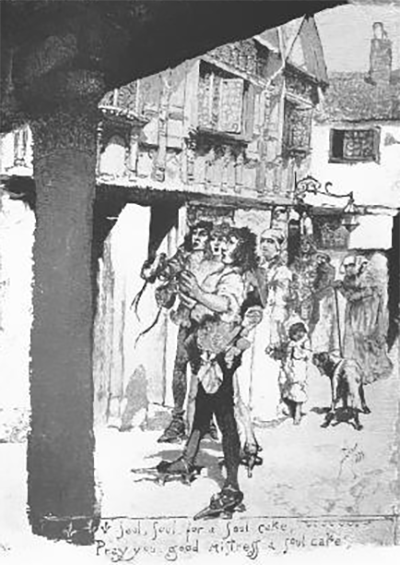
An illustration of the Christian practice of souling on All Hallows’ Eve, also known as Halloween, in an English town, 1882. (Photo: Public Domain/WikiCommons)
This tradition survived in Europe for hundreds of years, but didn’t have much of a foothold in America until after World War II. Sugar rationing had seriously curtailed sweets consumption during the war, but intense marketing by the forgotten candy companies after it ended pushed candy as the indulgence of choice on Halloween.
Today, children across the country venture out in costume on Halloween to get treats, no trick needed. But there are a handful of sweets they aren’t going to get: candies that can no longer be sold in the United States. The reasons range from toxicity to intellectual property infringement.
Here are six treats that won’t end up in anyone’s bag this Halloween:
Toxic Waste Nuclear Sludge Chew Bar
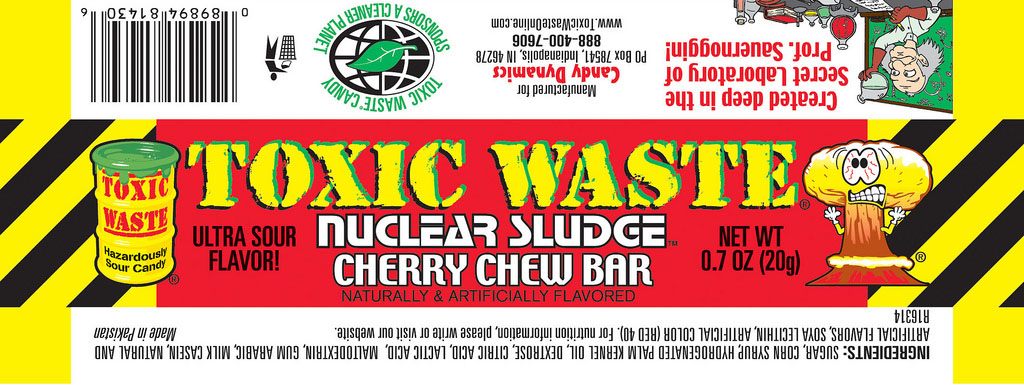
Packaging for the Toxic Waste Nuclear Sludge Chew Bar, recalled for “elevated levels of lead”. (Photo: FDA/flickr)
It came as little surprise to many when a candy called “Toxic Waste Nuclear Sludge Chew Bars” was recalled in 2011 for being, yes, toxic. Tests by the California Department of Public Health indicated that many of the bars had “elevated levels of lead“–approximately .24 parts per million, more than double the standard US FDA “tolerance” of .1 parts per million. Of course, lead poisoning can be fatal, especially in pregnant women and children under six years old.
As for the culprit, Indianapolis’ Candy Dynamics sold the candy (they are still in business), but it was manufactured in Pakistan, a country notorious for having lax safety and health standards. Luckily, no one reported becoming sick from the candy. The recall was self-imposed, out of what Candy Dynamics called ”an abundance of caution.”
Nestlé Magic Ball
Popular throughout the early 1990s, the Nestlé Magic Ball was a chocolate ball with a special surprise–a plastic toy embedded in the middle, usually of the Disney or Pokémon variety. Unfortunately, these treats were illegal.
Way back in 1938, President Franklin Roosevelt signed into law the Federal Food, Drug and Cosmetic Act. In it, there’s a provision that states a confectionary is adulterated, and therefore illegal, if it “has partially or completely embedded therein any nonnutritive object.” A plastic toy is a “nonnutritive object,” so the Nestlé Magic Ball had been illegal for some five decades before it even existed.
In 1997, consumer groups–largely subsidized by Nestlé’s competitor, Mars–went after the chocolate company, saying the plastic toys were choking hazards. Nestle insisted the product was safe, but the FDA agreed with the consumer groups, saying that under the act as it was written, the candy was in violation and illegal. On October 1st, 1997, Nestle withdraw the Magic Ball from shelves.
Toffee Crisp

A Nestle Toffee Crisp. (Photo: Evan-Amos/WikiCommons)
Sometimes it isn’t what’s inside the candy that matters, but what wraps around it. For Cadbury’s Toffee Crisp, the packaging is the reason the candy bar cannot be sold in the United States.
In August 2014, Hershey filed a lawsuit against L.B.B Imports (and another smaller candy importer) for importing specialty chocolates. Hershey claimed only it had the right to sell these candies, because it had purchased Cadbury’s United States’ production back in the early 1980s. Furthermore, the company claimed that many of the chocolate bars that were coming into the country were infringing on the Hershey’s trademarks, including the Toffee Crisp. According to Hershey, the candy’s black and orange packaging was too close to the famed Hershey product, the Reese’s Peanut Butter Cup.
Not surprisingly, this offended many fans of the British Cadbury chocolates, who felt the candy was superior in quality to Hershey’s. Nonetheless, Hershey and L.B.B. settled, and L.B.B. agreed to stop importing and selling British-made Cadbury chocolates in the United States.
Candy Cigarettes
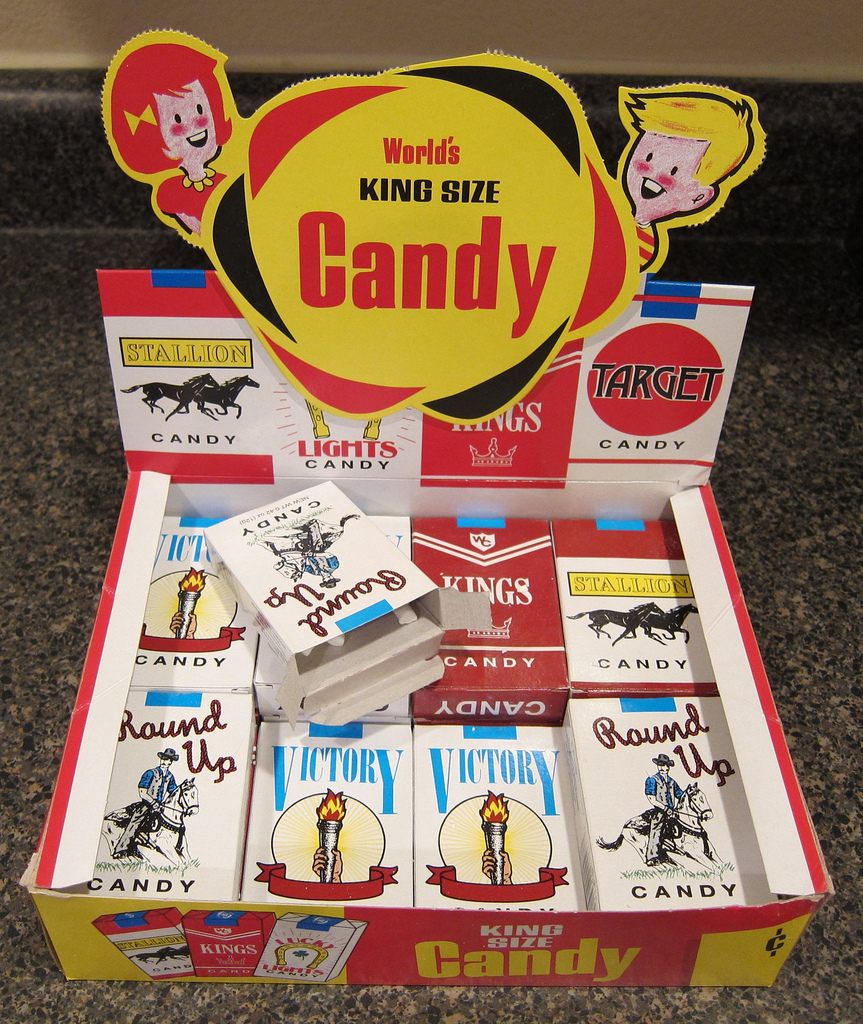
Candy cigarettes. (Photo: Phillip Stewart/flickr)
Who doesn’t love relaxing with an old-fashioned sugar smoke? For the majority of the 20th century, candy cigarettes were readily available, allowing kids to mimic cigarette-smoking adults. In 2009, that mostly changed when the FDA banned flavored cigarettes from American shelves. This ban didn’t apply to the candy itself, just to actual cigarettes flavored like fruit or candy–but it encouraged many American stores, including Wal-Mart, to take the candy off the shelves.
A key factor in Wal-Mart’s policy change was a 2007 study published in Preventive Medicine, which showed a statistical link between candy cigarettes and smoking real ones. The study found that 22 percent of people who currently smoked had consumed candy cigarettes as a kid, while of those who didn’t currently smoke, only 14 percent used candy cigarettes. The study’s leader further emphasized the results by saying, “The continued existence of these products helps promote smoking as a culturally or socially acceptable activity.”
Haribo Sugar Free Gummy Bears

Haribo, the maker of sugar free gummy bears. (Photo: m01229/flickr)
In early 2014, the world learned how much harm a handful of gummy bears can do. That’s when the internet caught on to the Amazon reviews for Haribo’s Sugar Free Gummy Bears, which revealed the considerable colon damage that a serving size of these treats could cause.
As the Atlantic pointed out, the culprit behind the gummy bears’ bodily onslaught is the sugar-substitute lycasin. Listed as the first ingredient in the candy, lycasin is a hydrogenated syrup that’s been clinically studied and is considered safe to eat. But lycasin consists mainly of maltitol, a well-known sugar alcohol that is almost as sweet as sugar. The problem with maltitol is that is not fully digestible and ferments in the gut. If eaten in excess, side effects can include increased flatulence, loose stools, and diarrhea. According to studies, even just 40 grams of maltitol can cause “gastrointestinal responses.” That’s the equivalent of 15 gummy bears. Suffice to say, it is very easy to eat 15 gummy bears in one sitting.
Due to the media-attention and the very poor consumer reviews, Haribo has since discontinued this particular dangerous bear.
Trolli Road Kill Gummi Candy
In 2005, Kraft Foods Inc. pulled their Trolli Road Kill Gummies in response to protests from the New Jersey Society for the Prevention of Cruelty to Animals. The candy featured gummies in the shape of squashed snakes, chickens and squirrels–complete with tire marks. The New Jersey SPCA claimed that the road kill candy sent a “wrong message to children, that it’s OK to harm animals.” It took particular offense to the advertisement, which featured animated animals fearing for their lives with a pair of headlights rapidly approaching them.
Kraft said that their candy was “misunderstood“ and they never had any intention of offending anyone.
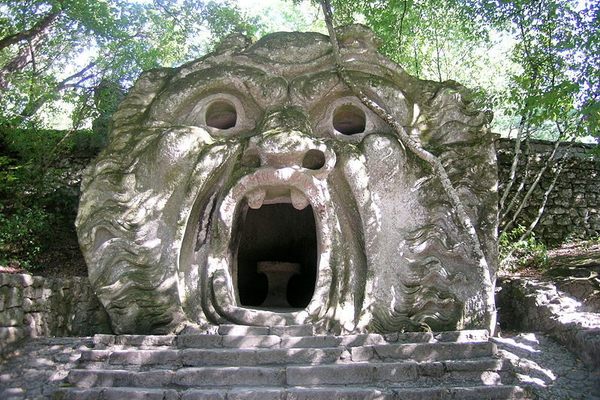
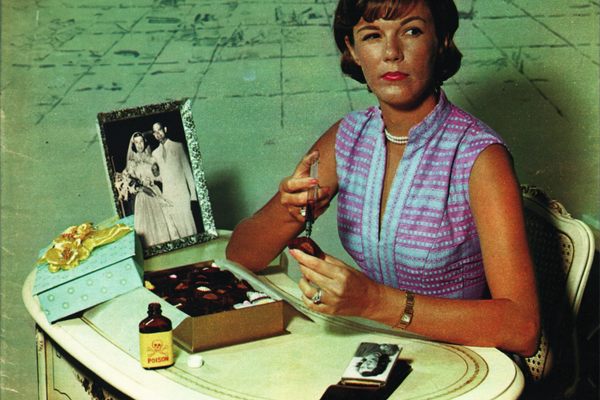






Follow us on Twitter to get the latest on the world's hidden wonders.
Like us on Facebook to get the latest on the world's hidden wonders.
Follow us on Twitter Like us on Facebook